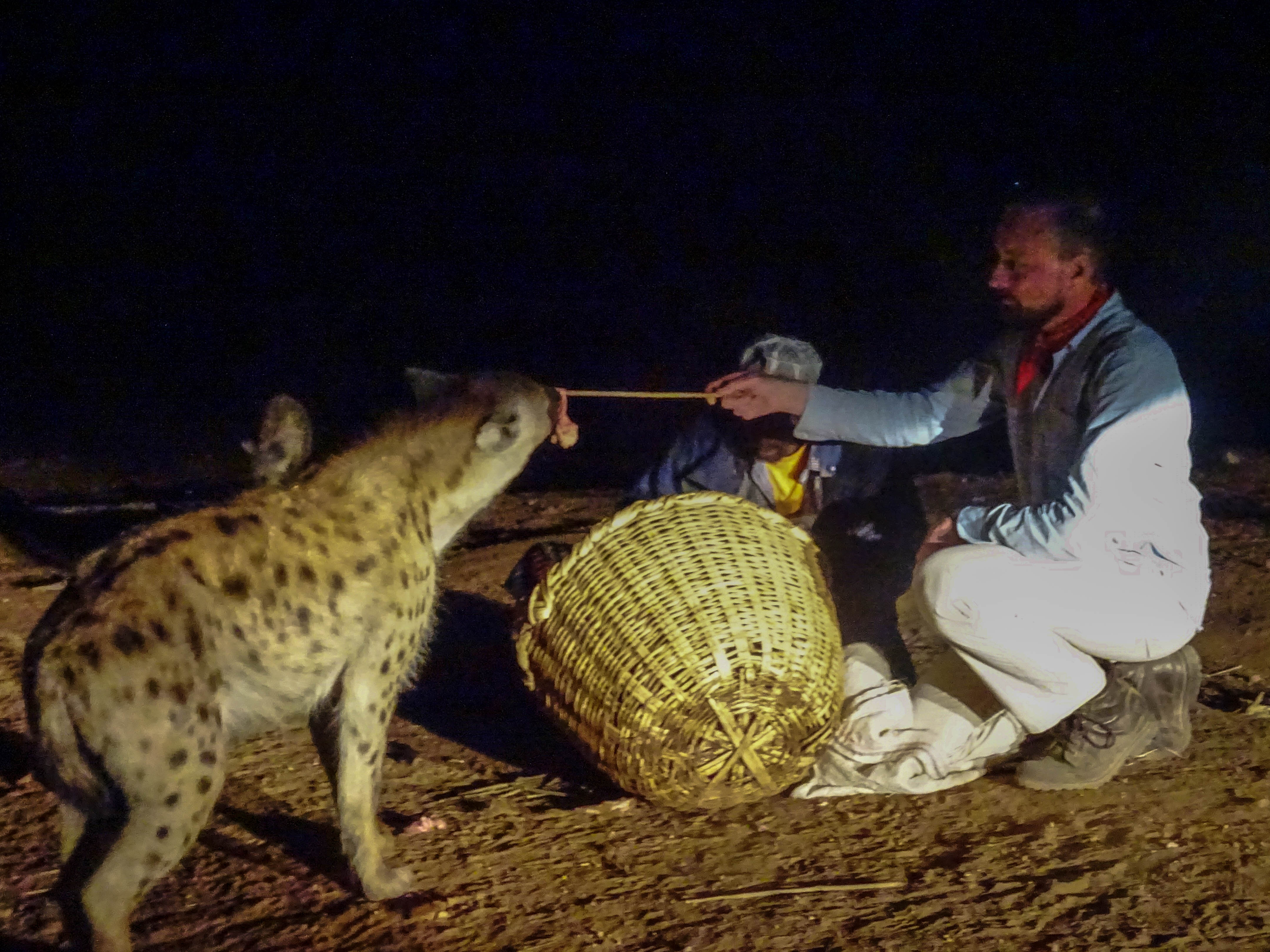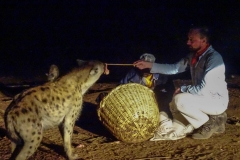The Hyenas of Harar
Nighttime Visitors to Ethiopia's Walled City

The fortified town of Harar in predominantly Christian eastern Ethiopia is said to be the fourth holiest city in Islam. Although as a trading place it is a melting pot of African and Islamic cultures, historically Harar was relatively isolated in the region. As a result, it has developed certain unique cultural aspects, such as the traditional Harari townhouses with their unusual interior design.
Surrounded by protective walls built in the 13th and 16th centuries, the town is a maze of alleyways and winding streets and contains over 100 shrines and more than 80 mosques, three of which date from the 10th century. It is also a kaleidoscope of colour – be it the vibrant souk, the vivid hues of the people’s clothes, or the gaily painted doors and walls of the buildings.
Harar’s exceptional cultural and architectural features have earned it a place on UNESCO’s list of world heritage sites where it is classified as being of Outstanding Universal Value.
Click on the photographs to enlarge and see the captions:
I arrived in the city on 6 January – Christmas eve, according to the old Julian calendar which Ethiopia follows. Even though Harar has a large Muslim population, it has many Christians, too, and people were busying themselves with last minute Christmas purchases.
A maelstrom of shoppers carrying plastic bags of fruit and vegetables, toys made in China or artificial Christmas trees moved in all directions. Some had tall bunches of freshly cut papyrus, the plant being traditionally scattered on the floor at this time of year. People clambered onto buses or squeezed into the back of one of the myriad blue and white tuk-tuks that serve as tiny taxis.
On more than one occasion, I saw goats being bundled in as well, oblivious of the fate that awaited them. Women from the countryside clutching live chickens thrust them at passers-by in a bid to sell their stock before people retreated to their homes for the evening. People shouted, car horns sounded and engines roared.
The following day, the city was much quieter. Christian families celebrated Christmas at home while Harar’s Muslim inhabitants went about their business. Much of the souk was closed – spices, pots, pans and other wares packed up under protective awnings. It was an occasion to wander round the fortified town, seeking shade where possible and finding refreshment in the local beer that has been brewed here since 1984.
One of Harar’s quirkier attractions are its hyenas. Ask ten different people about the history of these animals and you will get as many different answers.
Each evening after nightfall, a clan of spotted hyenas heads to the town from the surrounding hills. The ‘hyena man of Harar’ – whose modest house is just outside the city walls – feeds the animals pieces of meat, proffered on a stick. He has been doing so for many years and calls to the beasts to lure them out of the shadows. Later on, when everyone has gone to sleep, the hyenas wander the city’s streets searching for scraps of food.
The tale goes that hyena feeding began in the 19th century when a famine caused the starving animals to attack livestock and people. One man had the idea to feed the hyenas porridge so that they would leave the livestock alone. Apparently, it worked.
It seems feeding meat to the hyenas only started in the 1960s, but once a year a local imam heads out to offer them porridge as part of a special ceremony. If the animals eat all the porridge, it is taken as a good omen for the coming year.
The fun part is that visitors can also get to feed the hyenas.
Sadly, these animals have a bad reputation, perhaps because of all those nature documentaries where the filming is edited to portray them as vicious scavengers. Seeing the hyenas close up, though, I was surprised by how cuddly and furry they looked and by how beautiful their big, brown eyes were. Needless to say, I did not throw my arms round them as I suspect they might not have appreciated it.
RETURN

